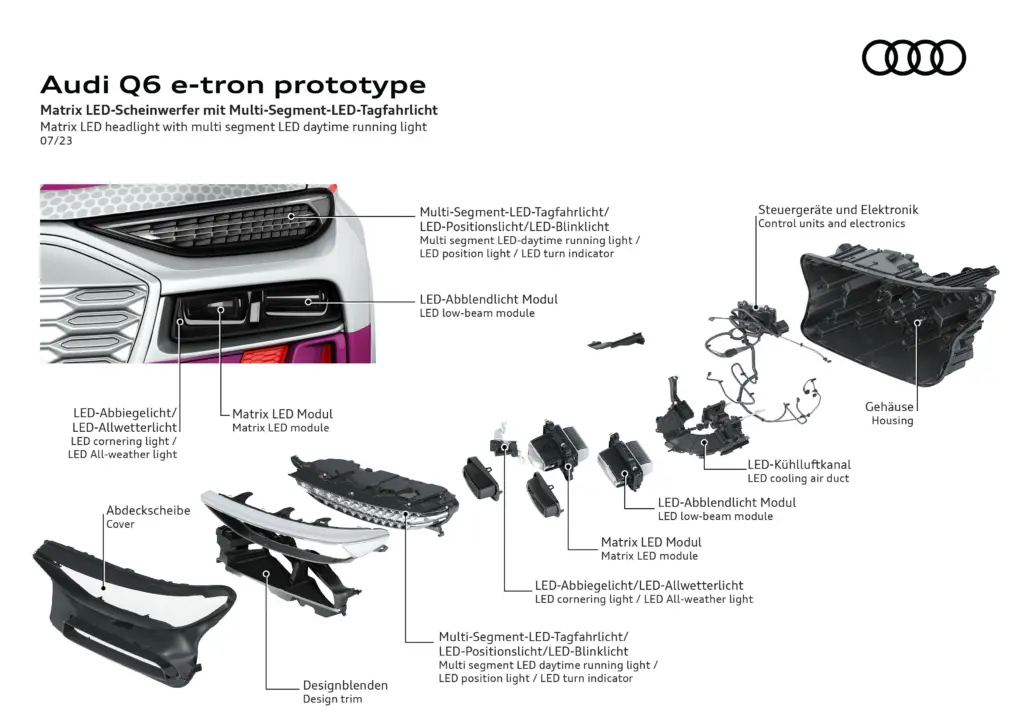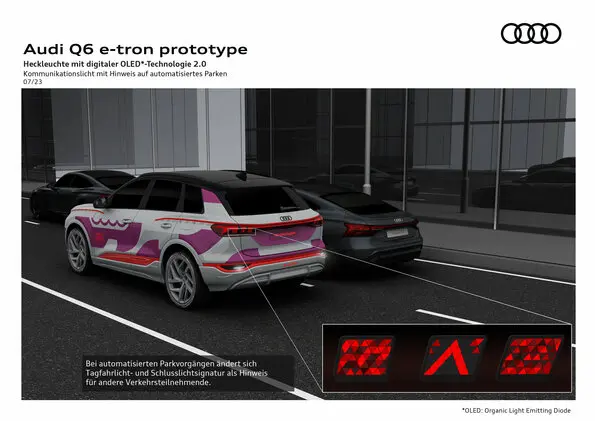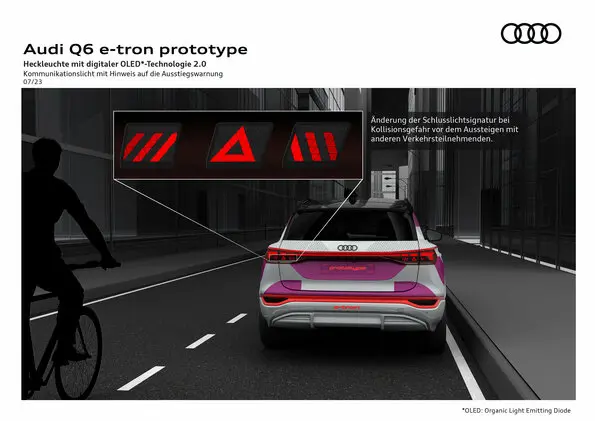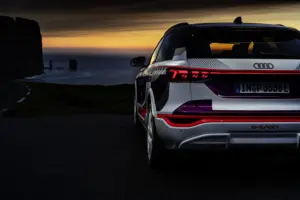Audi’s new OLED headlights use DMD (digital micromirror device) technology to create a high-resolution image of the road ahead. Each headlight contains approximately 1.3 million micromirrors that can be individually controlled to create a precise beam of light. This allows the headlights to project different light patterns depending on the driving conditions, such as a dynamic bend light that illuminates the road around a corner or a lane and orientation light that helps the driver stay in their lane. The OLED headlights also feature a proximity indication function that activates all of the rear light segments when another vehicle comes within two meters of the car from behind.

The DMD chip in each headlight is 2.5 x 2.5 millimeters in size and contains 1.3 million micromirrors. Each micromirror is 100 x 100 micrometers in size and can be tilted at a rate of up to 5,000 times per second. The light guide in the headlights is made of a special plastic material that is transparent to OLED light. The light guide directs the light from the OLEDs to the road in a precise beam and the combination of source materials and precision guiding can lead up to 30% greater efficiency than conventional LED headlights.

The OLED headlights can be customized to project different light patterns depending on the driving conditions. For example, the headlights can project a dynamic bend light that illuminates the road around a corner or a lane and an orientation light that helps the driver stay in their lane. They also feature a proximity indication function that activates all of the rear light segments when another vehicle comes within two meters of the car from behind. This helps to prevent the other driver from being blinded by the headlights.



It may not seem like a display technology, but who can argue with the fact that OLED headlights are strutting their wares as well as big screen TVs. They’re adding an impressive dynamic to the car driving experience, and consumers are bound to love the features because they pop right out, offer useful driving guidance, and sophisticated messaging to those who venture too near to the car. Automotive just keeps getting more and more interesting as an opportunity for display technologies.

